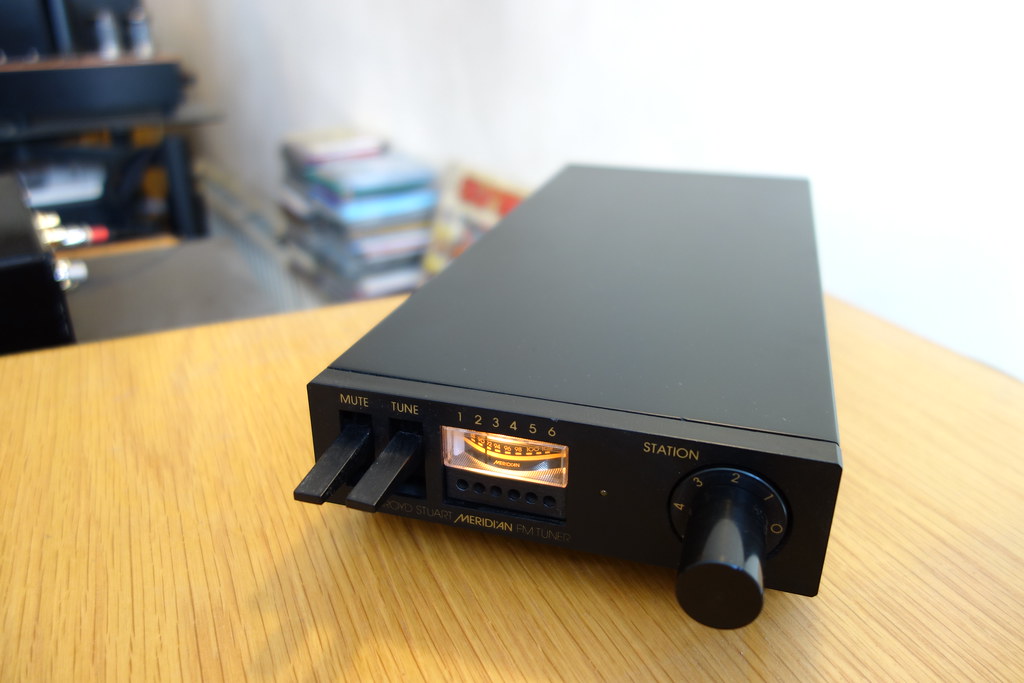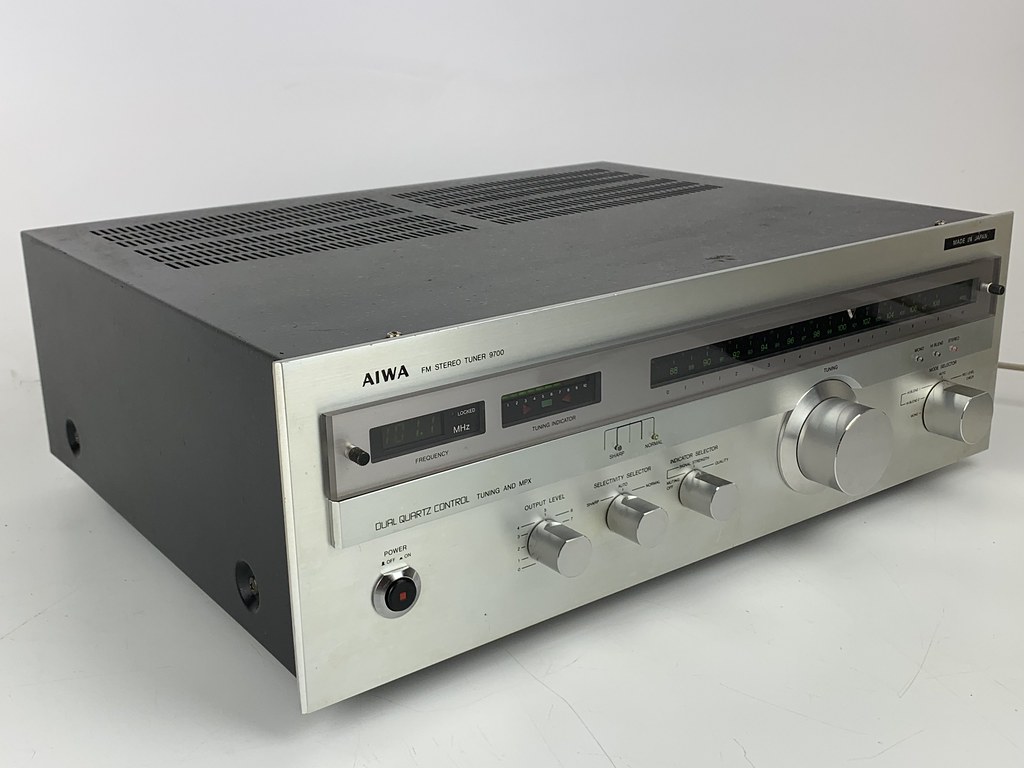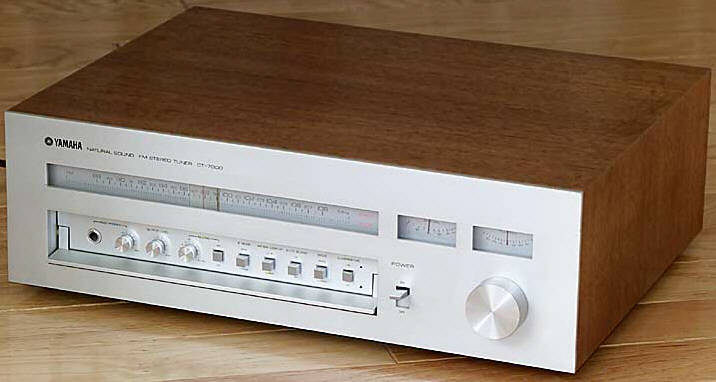What’s not to like about the MD-90 from Magnum Dynalab? Any red-blooded radiohead will be enchanted by its delectable fascia, which is packed with analogue meters, LED numerals, switches, knobs, and the inscription ‘analogue FM tuner.’ If there was ever a product that extolled the virtues of its medium, this is it. The MD-90 instantly transports me back to my boyhood, when I used to marvel at high-end FM tuners in publications. The golden rule was that the higher the number of metres on a tuner, the more expensive it was. The MD-90T is the analogue tuner equivalent of a Cadillac based on that criterion alone…
You have to credit it to this brand; twenty-five years later, your first product was the ‘Signal Sleuth’ (intended to amplify FM signals) and the follow-up was an analogue FM tuner (the FT 101), which is remarkably similar to today’s line. The company is pleased to employ its own custom circuitry and does not produce FM tuners that use digital synthesizer tuning as a point of principle.
Magnum Dynalab’s well-known MOSFET front end is featured on the MD-90, which is touted to deliver three levels of “extremely meticulous and exact amplification” with group delay filtering. A custom three-stage RF front end is used, as well as a custom Auto Blend RF Circuit that continuously checks and modifies stereo separation to ensure ideal stereo quieting. A new Magnum Dynalab circuit board is installed, as well as a revised power supply circuit. The company’s ‘analogue remote system’ can now be housed inside the MD-90T chassis, allowing for exact analogue tuning through the optional infrared remote control. It has an automated gain control system. Finally, a matching Philips military grade JJ 6922 tube is used in the final amplification stage, as indicated by the ‘T’ designation.
The front panel frequency display is comprised of three backlit meters for signal level, multipath interference level, and center-tune status, as well as appealing soft amber 0.5 LED digits. Although there is no flywheel effect, the huge right-hand tuning knob feels great to the touch. Toggle controls for bandwidth, interstation muting, and stereo/mono mode are located on the left. The fascia is tastefully done, but the steel case beneath it does not seem as robust as one might anticipate for the price.
The sensitivity and selectivity of this device really amazed me. Despite using Magnum Dynalab’s ST-2 fifty-four inch single element dipole antenna for this test, I first connected a T-shaped piece of ‘wet string’. My house is located in a valley with poor FM (and, for that matter, TV) coverage, but DAB as a concept is almost non-existent. All the more astonishing that the MD-90T, using the aforementioned travesty of an antenna, was able to pick up a Welsh language radio station from almost a hundred miles distant! It also picked up a few more stations, including BBC Radio 4 on 94.3, which I had no idea was available from where I was. Anyone who has had problems with signal strength or antennas will be astounded.
This tuner sounded great even with the wet string, offering me an FM experience I hadn’t realized was possible these days. As I moved to the better dipole, it occurred to me that the sound quality of DAB and Internet radio is so poor that I am intentionally avoiding listening to broadcasts. On BBC Radio 4, an interview between Stephen Merchant and Harry Shearer was so smooth, velvety, and natural sounding that I was taken aback. So much Internet radio I hear (and I hear a lot) is brittle and jagged, flat and two-dimensional, yet listening to the Magnum Dynalab felt like I was in the room with those two individuals. The voices’ harmonics were astonishing, especially considering how rarely you hear them these days via digital. It gave them an authentic tone that was pure, unadulterated joy to listen to.
Moving on to BBC Radio 2 and some Andrew Lloyd Weber show tunes, including Love Changes, performed by the London Symphony Orchestra. Everything was fantastic. Violins sounded natural but not edgy, trumpets had a deep roughness, and snare drums sounded like snare drums rather than sandpaper. For radio, there was also a strange occurrence in which the instruments appeared to be in different positions, both left to right and front to rear; there was even the impression that they were in a music hall with its own acoustic. When I stared at the Magnum Dynalab, the blue stereo pilot LED returned my gaze!
The jewel in the crown of this tuner’s capabilities was, as expected, Radio 3. The Proms were beautiful, with this tuner reaching right into the broadcast and capturing everything worth hearing, then returning it to me with sensitivity, tenderness, and love through my loudspeakers. I was transfixed once more by the sound of acoustic instruments on the radio; I’ve simply grown accustomed to them as digital facsimiles of themselves, with only the ‘low hanging fruit’ of the audio signal conveyed and the rest of the waveform, the bits we’re supposedly unable to hear, simply thrown away on our behalf! However, the MD-90T outperformed not only MPEG, but also an excellent synthesizer tuner.
The Magnum Dynalab MD-90T intrigues me because it reconnects you to a fantastic analogue source that is frequently overlooked. It demonstrates, without a doubt, that FM is by far the best music/speech transmission channel available to mankind, effortlessly spearing DAB and Internet radio through its very heart. It’s not simply the ‘accuracy’ of FM or the lack of digital nasties that entices; it’s also the incredible velvety sound it can provide. When you return to vinyl after years of listening to Compact Disc, you realize how much you’ve been losing out on. The MD-90T, on the other hand, doesn’t just sound wonderful because it’s analogue; it’s sonically successful because it’s analogue done right, and to modern standards. The RF component is incredibly sensitive and selective while never intruding, while the audio section is clear and smooth.
Of course, whether any of this is ‘worth it’ is entirely up to you; suffice to say that, since that analogue appears to be fighting (and winning) another day, any value calculations should be based on how much you believe you’ll use this product. If radio is a big part of your life, I think you’ll find it’s actually pretty good value for money. The delightful tactile experience of tuning the MD-90T is delightful in and of itself, but the true excitement begins when the stereo beacon illuminates and the listening begins.








